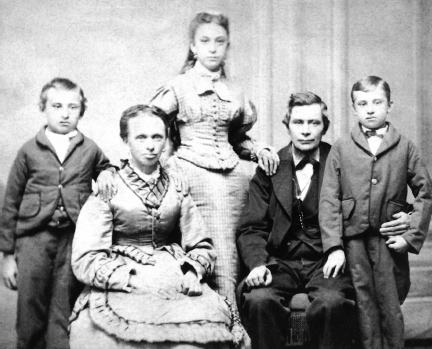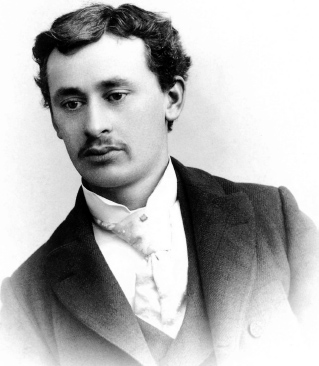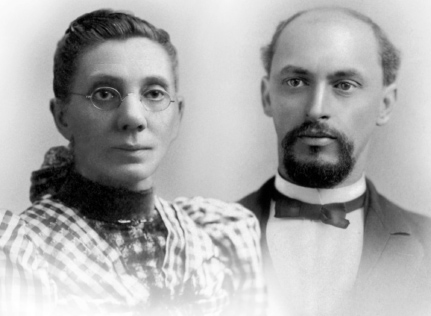Greater's Ice Cream (2 page)
Read Greater's Ice Cream Online
Authors: Robin Davis Heigel
Tags: #Graeter’s Ice Cream: An Irresistible History

The company's history encompasses a story of love and division, bickering and communing, but always with attention to one of the most irresistible products in America: its ice cream.
How sweet is that?
People have called Cincinnati many names: Porkopolis, Queen of the West, Queen City, Blue Chip City and the City of Seven Hills. But the city along the Ohio River that was founded in 1788 got its final name from a famous ancient Roman general named Cincinnatus. Many considered Cincinnatus, who lived roughly from 520 to 430 BC, to be a hero for defeating the Aequians, Sabinians and Volsciansâand then resigning from the dictatorship he had rightly won to rule only his own farm.
Cincinnati resembled pioneer-era cities such as Pittsburgh and Nashville, riverboat towns like St. Louis and New Orleans and immigrant-industrial metropolises similar to Brooklyn, Philadelphia, Chicago and Detroit.
Cincinnati consisted of a large area, with the Ohio River forming the southern boundary and the hills to the north enclosing its basin. Initially, people and businesses set up in the basin of the city, near the river, because it could be harnessed for energy and transportation of goods and people.
The introduction of steam navigation on the Ohio River and the completion of the Miami and Erie Canal helped the city's population grow.
The city limits stopped at Liberty Street, and the area above it was known as the Northern Liberties because it was not subject to the laws of the city. As such, it drew a concentration of bootleggers, saloons and entrepreneurs. In 1848, the city annexed the area as its first “suburb.”
The city considered itself a jewel of the Midwest, and to prove it, it held industrial expositions every year from 1870 to 1888 to showcase invention, trade and the arts. These gatherings proved that Cincinnati was a center of music, art and industry.
Cincinnati was one of the first American cities to be home to a zoo. The Zoological Society of Cincinnati was founded in 1873 and officially opened the gates to the Cincinnati Zoo & Botanical Garden in 1875. At the time, its animal collection was very small: just a few monkeys, grizzly bears, deer, raccoons and elk but an impressive collection of birds, including a talking crow.
The city also played home to a professional baseball team: the Red Stockings who eventually went on to become simply, the Reds. In their first season in 1869, they went undefeated.
The city became an important stop along the Underground Railroad in the preâCivil War era because it bordered on the slave state of Kentucky. Historical papers often mention Cincinnati as a crucial stopping place for those escaping slavery.
During the eighteenth and nineteenth centuries, public markets represented the primary source for buying and selling perishable food in Cincinnati, as they were in other urban centers. Butchers, farmers and produce vendors gathered under one roof to sell their wares to residents who lived within walking distance of the markets. These markets also became
places to socialize and for public meetings. At one time, Cincinnati had as many as nine public markets in different areas of the city. But as the trolley and incline systems were constructed, people moved from the basin of the city to the hills. On each hill, neighborhood businesses, including grocery markets, popped up. The only remaining public market in Cincinnati today is the Findlay Market, near the Over-the-Rhine neighborhood.
In the late 1800s, Cincinnati was governed by a system of wards that lent themselves to corruption. From the 1880s until the 1920s, the Republican machine of Boss Cox primarily ran the city. By 1924, a new politician, Murray Seasongood, had instigated the ballot system to eliminate the corrupt wards.
The city was also the birthplace of two United States presidents. Benjamin Harrison, the twenty-third president, was elected in 1888 (at which time he resided in Indianapolis, Indiana). William Howard Taft was elected in 1909. The Tafts became a major political family in Ohio, with the president's son and grandson both becoming U.S. senators and his great-grandson, Bob Taft, being a two-term governor of the state.
People who came to America from different countries settled together in neighborhoods such as Over-the-Rhine for Germans and the West End for Eastern Europeans, especially Jews. In many neighborhoods, workshops, homes and businesses stood side by side. To accommodate the growing population, developers created “French flats,” which, instead of being just sleeping rooms, were more traditional apartments that included private bathrooms and kitchens.
But the densely packed population in these areas created poor sanitation conditions that led to a cholera outbreak in 1867. To help ease these conditions, Cincinnati constructed suburban parks, new waterworks and broad avenues out of the city.
Despite the city's flaws, which were the same found in most urban areas at the time, to Louis Charles Graeter, Cincinnati was a haven.
RAETER
M
OVES TO
C
INCINNATI
Born in 1852, Louis Charles, son of immigrants from Germany, left his home in Madison, Indiana, as a teenager and moved to the Queen City. His grandchildren say they were told the young Graeter left home because his father, a barber, was “so mean to him,” a quality they considered to be “typical” of their German heritage. Time would prove that the Graeters had a long history of being strong-willed, opinionated and not likely to shy from arguments.
Louis Charles landed in Cincinnati and began to sell ice cream at a street market at the base of Sycamore Hill. Making ice cream in those days was a painstakingâand expensiveâprocess. Graeter made the treat by stirring it by hand in a metal pail set in a bucket filled with ice and salt, two expensive and hard-to-come-by items. The concoction had to be eaten almost immediately because there was no way to store it. Ice cream was, in those days, still considered a novel delicacy.
Graeter's Ice Cream was a newsworthy company in 1883, when the
Walnut Hills News
ran a blurb that stated: “Graeter's Ice Cream business is opening unusually good. He keeps two wagons engaged in delivering and three men employed in making his delicious creams.”
But about the same time, Louis Charles decided that Cincinnati and the domestic life he had created with his wife, Anna, didn't suit him. He took $1,000 from his bank accounts and left his wife with the ice cream business and a fair amount of debt.

The Graeter family of Madison, Indiana. Young Louis Charles is on the far left.
Courtesy of Graeter's Ice Cream
.
Louis Charles set out to find his fortune in Stockton, California, where he married again. A different state and different faces offered only the same results for Louis Charles. Around the turn of the century, he left California and again returned to Cincinnati.
Louis Charles's brother, Fred, who had followed him to Cincinnati years earlier, was perhaps more noble than he. Fred had maintained the business and gotten it out of debt while Louis Charles was on the West Coast. When Louis Charles returned, Anna was gone, but the business was intact, so he resumed making ice cream in the French pots.
Maybe the hope for love knows no limits, or maybe the third time really is a charm, because Louis Charles again tried his hand at marriage. He wed Regina Berger, who was the daughter of prominent Cincinnati businessman Anton Berger. Anton was an upstanding man in the community, president and general manager of the Julius J. Bantlin Company, which manufactured saddlery and hardware. Regina, his third child, was twenty-three years younger than her new husband. It appears that in Regina, Louis Charles had met his match.

Louis Charles Graeter, founder of Graeter's Ice Cream, was born in 1852 and moved to Cincinnati as a teenager.
Courtesy of Graeter's Ice Cream.
The couple set up a home at 967 East McMillan Street in the Walnut Hills district of Cincinnati, a section at the top of the Main Street incline, one of the city's trolley systems. Louis Charles operated Graeter's Ice Cream out of their flat, cranking out the ice cream in the back room of the bottom floor and selling it out the front. Louis Charles and Regina lived in the upper floors. This store remained in operation until 1972. The property was sold in 1974.

Regina Berger (left) was the third wife of Louis Charles Graeter. She was twenty-three years his junior.
Courtesy of Graeter's Ice Cream.
“There were a lot of companies like this in Cincinnati. They made it in the back room and sold it out the front door,” said Lou Graeter, grandson and namesake to Louis Charles. “That's the way they ran the business. And they ran the business a long time that way.”
To make the ice cream, Louis Charles still used what was called a French pot freezer, a handmade metal bowl that looked like a cylinder and sat inside a wooden bowl filled with ice and salt. Louis Charles filled the metal bowl with a mixture of cream, sugar and eggs.
“That pot would spin the mix and force the product to the sides and it would freeze,” said Dick Graeter, another of Louis Charles's grandsons. “Then a person would stand there with a paddle and scrape that off the walls of that freezer until it all came together and was frozen.” To spin the pots, Louis
Charles lined them up and hooked them by a pulley to a single motor overhead.
In addition to ice cream, which was primarily a summertime treat at that time, Graeter's sold chocolate confections and various knickknacks. Dick remembered:
At that time, we sold novelties, too. A lot of ceramics. In those days you didn't have all the gift stores and all these other places selling all that stuff. That was another thing that was an extra sale that you had in the wintertime when you weren't selling ice cream. All retail people are always looking for something else to sell, something that will pay the rent.
Grandma always did that. She would go to New York a couple times a year and buy all this stuff and bring it back. And she'd send it to stores as part of the candy cases, different novelties, even toys and things.
RAGEDY AND
T
OUGH
D
ECISIONS
Life was cut short for Louis Charles in 1919 at the age of sixty-seven, when a car struck him as he exited a trolley.
It was a scary time for Regina, who was left with two young sons, a business and not even the right to vote (which wasn't granted to women until the following year). The world was in the midst of its first world war and the largest flu epidemic in history. The war claimed an estimated sixteen million lives, while the flu that started in 1918 killed fifty million across the globe. A fifth of the world's population, and a quarter of the people in the United States, contracted the disease.
Cincinnati was changing during this period, too. A wartime shortage of labor and poor economic and social conditions in the southern states drove people north for factory jobs. Cincinnati became home to a large black population who settled primarily in the West End. While many were poor, black entrepreneurs settled in Cincinnati, too. Businesses such as a jazz bar called Cotton Club, which many say rivaled the club of the same name in New York, brought celebrities to the city and helped improve its image as an arts center in the Midwest. In later years, such notables as Ella Fitzgerald and Billie Holiday sang at the club.
